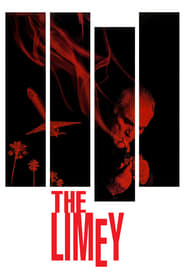Despite this not being close to Soderbergh's earliest work, The Limey has a curiously "first feature from a new artist working with a tight budget" feel to it. With its learned genre games, the quasi-Nolanesque non-linear narrative and the way it absorbs a lot of its look, feel and vibe from Los Angeles itself rather than creating it ex nihilo — these are often the preoccupations of new directors, not least of all because they are relatively inexpensive.
Still, that's perhaps only for the surface. Janet Maslin's review in The New York Times makes the case for The Limey being more of an art object than a film; a "walking Proustian evocation" of the past. That's probably the better way of looking at all the film's decisions than as 'a noir'. Speaking of 'surface', though, those shots of the Californian sunset rival, if not outdo, those in the Joan Didion adaptation Play It as It Lays (1972).
I've gotta say, though, the Cockney clichés grated with me right from the beginning. It was like one of those weird characters in a David Lynch movie, yet seemingly played straight. (The working-class minstrelry in Peaky Blinders annoys me for similar reasons.) Yet the completely over-the-top performance acted as a kind of mirror in which to see that the rest of the movie (and perhaps all LA-inflected noirs now that I think of it) are similarly hackneyed; it's clichés all the way down.
Anyway, a big shout out to editor Sarah Flack, who not only made this movie say something particular (and nicely hazy) about nostalgia in 1999, but probably has to endure Soderbergh getting all the credit for fracturing the narrative. Women editors are the unseen artists of American cinema, indeed.
The actors are all vivid and moving, yet there’s something intellectualized in their assemblage, collectively suggesting found objects who’ve been curated by Soderbergh into a cinematic gallery. [C]ross-cutting occurs throughout the film, wedding various timelines into a strand that suggests both a singular, collective timeframe and no frame at all. The Limey captures that sense we can have of missing out on a moment before it’s even occurred, as we can trap ourselves in the amber of preconceived nostalgia.
— Chuck Bowen (Slant Magazine)
Relies on a tricky, fractured editing scheme (by Sarah Flack) that jumps between past, present and future, and from location to location. A scene might be interrupted by quicksilver flash-forwards to its conclusion. It's like entering a room and finding the wall decorated with shards of mirrored glass that allow you to glimpse what will happen five minutes from now. [I]n some ways the structure, which turns the machismo into pulp existentialism, is a means of disguising just how conventional the movie is. But it also results in genre scenes that are unlike any others. [And] Stamp is used less as an actor here than as an icon of '60s British cool.
— Charles Taylor (Salon)
Never mind the revenge plot: this film's real goal is revisiting two charismatic stars of the '60s, Terence ("Billy Budd") Stamp and Peter "Easy Rider" Fonda. For walking Proustian evocations of the era, you can't get much more iconic than this.
— Janet Maslin (The New York Times)
Synopsis: The Limey follows Wilson, a tough English ex-con who travels to Los Angeles to avenge his daughter's death. Upon arrival, Wilson goes to task battling Valentine and an army of L.A.'s toughest criminals, hoping to find clues and piece together what happened. After surviving a near-death beating, getting thrown from a building and being chased down a dangerous mountain road, the Englishman decides to dole out some bodily harm of his own.

